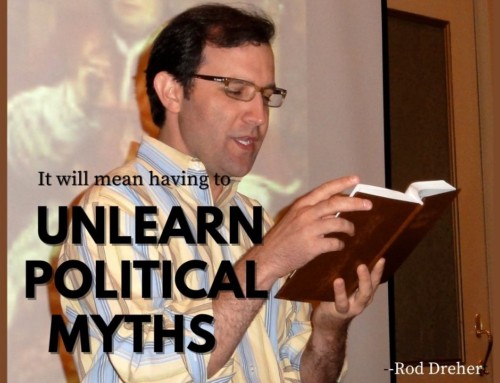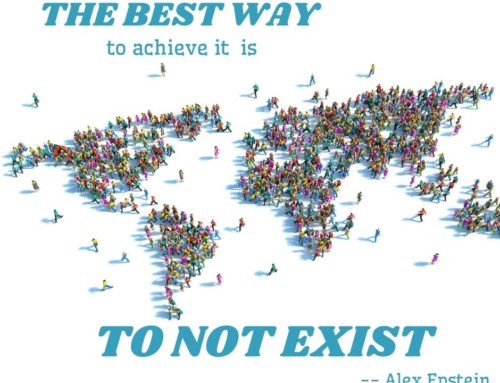My father was a smart fisherman.
He never had the spare time to stand in a stream, outfitted in waders, tossing his line over the water. But he made friends with the fellows who did. Every so often, they came around, offering us some fresh-caught trout.
Out came Mom’s skillet, the oil, the cornmeal. And we had a tasty supper.
This was fish with the bones in, mind you. To keep from choking ourselves on this treat, every bite turned into a sifting motion, separating spikes and flesh.
They were quiet suppers because we were all too busy to say much.
* * *
Not long ago, my daughter asked My Opinion on Things. This was back when the George Floyd riots were hot. Literally. Embers still glowing in the ashes. Broken glass not yet swept up.
Among other things, I told her that I blamed much of the world’s troubles on post-modernism. When I attempted to define that for her, I made a poor job of it.
I’ve done my homework since then.
According to Jordan B. Peterson, author of 12 Rules for Life, the post-modernist:
- Criticizes “objective notions of reason”
- Criticizes “absolute truth and objective reality”
- Reduces the human story to “oppressor versus oppressed”
- Regards “human nature [as] merely a social construct.” 1
“Why would you think that human nature is only a social construct?” says Peterson. ” . . . It’s because that means you construct it any way you want to.” 2
And as for oppressor versus oppressed:
“You can say, if you’re not naive, that people are motivated by power and that our interpretations of the world can be self-serving. I mean, we do want to serve ourselves, after all, because otherwise, we die. . . . So there is the probability that the way we look at the world will be tainted by narrow self-interest and maybe even tainted by in-group interests. . . .3
“We know this is true, but it’s also not all bad.”
Post-modernism is a theme of Peterson’s. In numerous lectures and videos, he traces its history as the caboose baby of Marxism. He names the thinkers and writers that fuel this movement and he warns where it leads.
You can also find a brief history of it here.
It’s a philosophy that’s abhorrent to the conservative mind, which believes:
- In a transcendent order — in God;
- In the existence of natural laws that cannot be broken;
- In a human race that is not infinitely malleable;
- In the impossibility of utopie in this life;
- In prudent change and incremental improvement, as opposed to wholesale overthrow of systems.
Upon George Floyd’s death, the soldiers of post-modernism seized the moment to move their cause forward. They called for defunding the police, as if the darker side of human nature would suddenly disappear. They called for the end of capitalism, even though the socialism they want has never worked anywhere, anytime.
Corporation after corporation, frightened by the threat of bombs, broken glass and boycotts, declared their new commitment to diversity, equity and inclusion.
* * *
Those words — diversity, equity, inclusion — they sound so nice. They’re not too far off from the lessons I learned in Sunday school: Sit by the lonely kid. Play fair. Even the weird boy is a child of God.
Same idea, different words, right? Diversity, equity and inclusion promise us all a better world, right?
It would be nice if they delivered on that promise.
According to corporate consultant Lawrence M. Ludlow, diversity training started as a effort to educate globe-trotting employees. Not every culture greets, eats and jokes the same way we do. One wrong assumption and we can ruin a business relationship in less time it takes to ride an elevator.
Somewhere, diversity turned a sharp corner. The National Association of Scholars reports that campus ratios of Democrat to Republican professors run as high as 12 to 1. Conservative professors are further delegitimized by the loss of “grant and scholarship applications, and committee memberships.”
Narrowing the range of allowable opinion in the university classroom leaves a vacuum that post-modernists are only too eager to fill. When they add their Marxist themes of power, oppression and resentment, you may now find that diversity means categorical game-playing.
This is what happened in, of all things, a virtual knitting community. Karen Templer, owner of an online craft business, shared her excitement about an upcoming trip to India. To her, the country was an exotic dream. To her fellow knitters, her excitement betrayed a “colonial” attitude. (See here, here, and here.)
This set off a discussion about too many creamy-skinned ladies modeling the sweaters in their magazines and too many dark-skinned people suffering glares of suspicion at their knitting stores. Templer apologized, but they poked needle-shaped holes in that too. Last I heard, they were all about ensuring that a sufficient number of non-whites create designs, run businesses and lead classes at their upcoming convention. As for actually knitting, I can’t say.
Now, let’s talk about equity. Same as equality, right?
Not quite.
For exhibit A, we might look at orchestras. Somebody noticed they were overwhelmingly white and male. It might have been women or Asians, who knows, but they wanted in. And why not?
Orchestras started blind auditions, with applicants playing behind a screen. What mattered was whether you played your sixteenth notes crisp and steady, not whether you resembled the orchestra director’s social set.
That’s equality.
Now the New York Times’ top classical music critic wants to apply post-modernism’s ruinous touch to your local symphony. “Blind auditions are based on an appealing premise of pure meritocracy,” he says. Remove the screens, to make sure that, say, a 25% black city fields a 25% black orchestra.
That’s equity.
And if this critic gets his way, I see no reason to pay symphony prices when the high school orchestra might sound just as good, and with cheaper parking to boot. “What will be the outcome,” says Ludlow, “at organizations that substitute sex- and race-based quotas for genuine ability and merit? How will these programs affect medical safety in an operating room or the design of a bridge?”
Finally, let’s talk about inclusion.
I mentioned my Sunday School lessons. Add in anything Mom told me about manners. Don’t stare at her burn scars. Don’t gawk at his amputation. Use some tact when you run in to the strange and the disgusting. That covers it, right? Do we need a new word, inclusion, when it’s all the same idea?
Target stores employed this word when they changed their bathroom policies. According to author Ashley McGuire, the company appealed to “Inclusivity” as they opened all facilities to the non-binary.
Customer reacted with swift ferocity, enough to tank the company’s stock prices.
“Rather than address,” says McGuire, “many customers’ apprehensions about its policy — specifically how a company that boasts eighteen hundred stores would ensure that predators would not take advantage of a policy that permitted anyone to use the restroom of their choice, Target doubled down . . .4
“Moms like myself were mocked to kingdom come for registering even the slightest concern about what such a sweeping policy means for our privacy and safety. A wave of articles rushed to point out how silly it is to worry about an assault in the bathroom, forgetting the glaringly obvious reality that since the dawn of civilization, relieving oneself has overwhelmingly been practiced only among members of one’s own sex. Until recently, bathrooms were one of the remaining places in society where men were not permitted to be with women and vice versa. Because of that clear barrier, even the sight of a man pushing open a door to a women’s restroom would raise eyebrows — and deter any would-be assailant with half a brain.” 5
Turns out inclusion doesn’t mean plain old kindness. It means, so far as I can tell: Be nice, never mind your own safety and security. And if you have misgivings, just shut up.
In sum, wherever you see the words “diversity, equity and inclusion,” you can be sure the post-modernists are running the game. It’s fish with the bones in. You’ll need to sift carefully and spit out what will choke you.
* * *
This game appeals to the empathy we all have, some of us brimming with it, some of us needing a nudge. But the trick is to help our fellow humans without making bigger problems. After all, pouring hot grease down the kitchen sink easily solves your grease problem. For now.
When the post-modernists take charge, all that “help” leads to less intellectual variety, less knitting and music-making, more box-ticking, more fighting, more getting bossed around. It leads to upended lives, like this, this, and this.
As post-modernism advances, not one of us can afford to make the smallest mistake.
If you’re employed, you may already have been drafted into this game. Perhaps you’re facing a fresh round of implicit bias sessions. According to Peterson, the test that measures “unconscious bias” doesn’t really measure anything at all. “The people who invented that bloody thing, they know we don’t know what it measures. . . . They also know that you can’t train people out of their unconscious biases. . . . But they don’t really care.”6
If you don’t like where this is going, why would you adopt the post-modernists’ assumptions about human nature? Why would you speak with their vocabulary? Recommend their books? Work for their goals?
How bad can this get? History provides us with a few clues. We know the horrors that razed the 20th-century’s totalitarian regimes. Or half of us know it. The other half attended high school after 1980 7 and never got the message. At any rate, Never knew it happened ≠ It never happened. So I’m pleading with the what’s-so-bad-about-communism set to catch up on their history lessons. Read about the survivors. Read what their children know. We have no shortage of stories, and they trumpet a common theme: it started like this.
Photo credits:
fish bones: Leonard J Matthews on Visualhunt / CC BY-ND
socks: madelinetosh on Visualhunt.com / CC BY-NC-ND
violin: VisualHunt.com
cubicles: mark sebastian on Visual Hunt / CC BY-SA
- https://www.youtube.com/watch?v=PfH8IG7Awk0&feature=youtu.be @ 1:13:11
- Ibid @ 1:13:50
- Ibid. @ 1:12:00, emphasis added
- Ibid. McGuire, Kindle edition locations 2844-2845
- Ibid. McGuire, Kindle edition locations 2859-2860
- https://www.youtube.com/watch?v=PfH8IG7Awk0&feature=youtu.be @ 1:23:00
- In 1980, Howard Zinn published his People’s History of the United States, which soon became a high school textbook. See https://kristencarsonauthor.com/ideas-have-consequences/










Well written. Post-modernism is very insidious and has made it way out of the educational system and into the read world. In schools kids are given accommodations based on their disability and that is equity. But now they want to take that same approach and make accommodations for people based on the color of their skin. Post-modernism is a racist theory and practice.